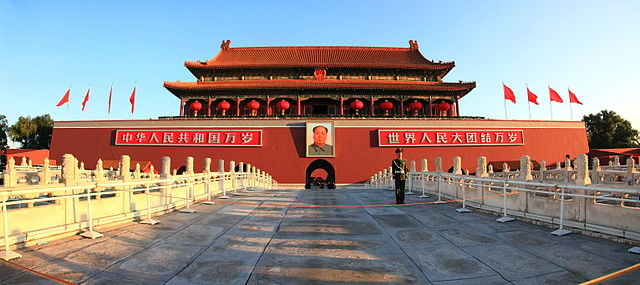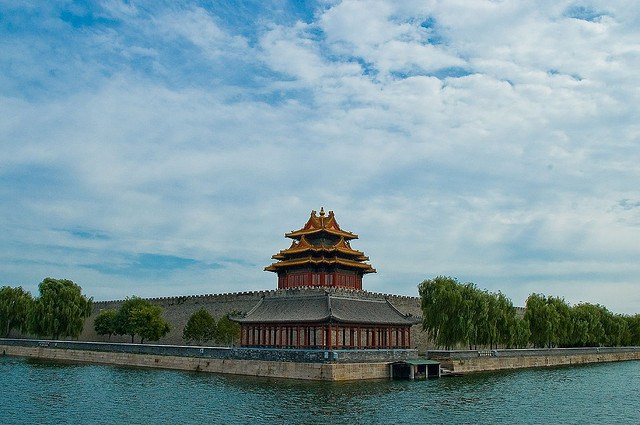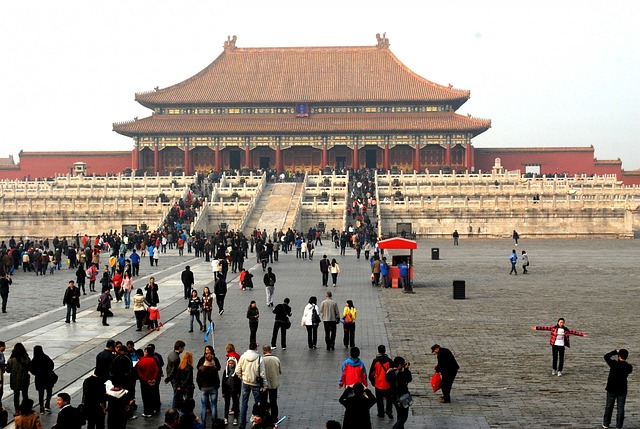5-Minute Guide to Beijing
Since hosting the 2008 Summer Olympics, Beijing has soared to a top destination for pleasure travel. Additionally, in the last decade the Chinese capital has become an important city for international business due to the growing Chinese economy and its political power. Beijing is a massive city with more than 12 million inhabitants and a history dating back more than three millennia. Beijing is the perfect mix of ancient and modern China. Take for example, a Communist leader’s statue placed alongside a former Emperor’s palace. It is a total juxtaposition, yet has grown to embrace China in its complex entirety.
It is easy to feel lost travelling in a city as large as Beijing and with its many important historical and cultural monuments. To simplify your visit and make the most of your time, here is a 5-minute guide to Beijing:
Photo of Forbidden City via Pixabay / PublicDomainPhotos
Top Sites
Beijing is chock full of attractions that are straight from the pages of a history textbook. The Forbidden City is one of the most popular sites, built in the early 15th century. Consisting of the Imperial Palace and over 9,000 rooms and 250 acres, this was considered the capital of ancient East Asia. Next, Tiananmen Square represents “new China” and its establishment as the Republic of China in 1949. You will see many important buildings surrounding the square: Tiananmen Gate of Heaven Peace; the Great Hall of the People, the meeting place of national congress; National Museum of China, an excellent museum to learn about Chinese history; Monument to the People’s Heroes; and Chairman Mao’s Mausoleum.

Photo of Tiananmen Square via Wikipedia / 张瑜
For more remnants of ancient China, head south to The Temple of Heaven, one of the holiest places in the whole country known for its sacrificial burials of emperors. If tombs interest you, the Ming Tombs house 13 out of the 17 Ming Dynasty emperors buried in private chambers. The Summer Palace is another impressive palace and has the largest and most complete imperial garden in China.
Lastly, no trip to China is complete without climbing the Great Wall. One of the 7 New Wonders of the World, the wall was originally built along the historical northern borders of China to protect the Chinese empires against raids and invasions of various nomadic tribes. Most of the remaining wall structure is from the Ming Dynasty in the 14th Century. You can walk along one or multiple sections of the eight sections of the wall.
To Eat
Beijing’s most famous dish is Roasted Duck. The traditional method of preparing Beijing Duck began over a hundred years and continues as the most popular dish for locals and tourists who want to try local cuisine. If you ask which is the best Beijing duck restaurant in Beijing, you will probably get many different answers. Everyone thinks their favorite “duck house” is the best and will tell you so! Other popular dishes in Mandarin Cuisine are hot and sour soup, tomato and scrambled eggs, Peking barbeque, Moo shu pork, sweet and sour spare ribs, and fried meatballs. Street food is also sold on carts throughout the city. If you’re adventurous, you can try the scorpions or live worms!
Weather
Beijing has four discernible seasons: a short windy spring, long hot summer, cool and pleasant autumn, and long cold winter. July and August temperatures can exceed 40 C (104 F) and January can drop to -20 C (-4 F). Throughout the spring months (April to May) temperatures in Bejiing rise quickly each day. They also vary greatly between day and night. Spring is a windy, dry season, frequented by heavy sandstorms. Summer months (June to August) are long and hot with plenty of rainfall. Expect humidity! Winters (November to March) are cold. A trip during these months may be a shock to visitors from warmer countries. The average temperature is below 0 C (32 F) from December to February. Autumn (September to October) is probably the most attractive season in this city for visitors, when there is plenty of sunshine and cooler temperatures. This makes September and October the best time to visit this city.

Photo of Palace via flickr / Jack Versloot
Language
People speak Mandarin Chinese in Beijing. The Beijing dialect is also known as Pekingese, spoken in the urban areas. Mandarin is the official language in the People’s Republic of China and Republic of China. Although the Beijing dialect and Standard Chinese are very similar, a few differences differentiate the Beijing accent from Standard Chinese. Most commonly, Beijing Chinese uses local slang commonly in daily speech. For example you might hear 劳驾 láojia – “Excuse me” used often on public transportation. English is not necessarily ubiquitous in the city, so it is highly recommended to learn at least basic Chinese before your trip to Beijing. First, check your initial Chinese level with a Chinese level test before choosing a Chinese language course option that suits you. Enjoy your delicious Roasted Duck!



